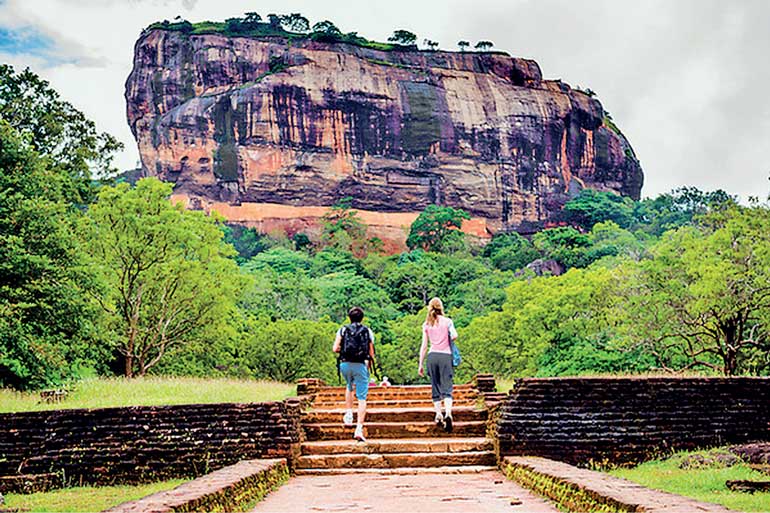Monday Dec 08, 2025
Monday Dec 08, 2025
Wednesday, 1 December 2021 00:00 - - {{hitsCtrl.values.hits}}

If one assumes that the average revenue of CCF was Rs. 4 billion per year in the four years between 2016 and 2019, 70% of the revenue was misappropriated. Accordingly, it is reasonable to suggest that charging tourists exorbitant fees is unfair and unethical
|
By Professor Prianka Nalin Seneviratne
Media reports in recent months suggest that tourist arrivals are steadily growing. These tourists will bring in foreign exchange and kick-start the hospitality industry and the economy as a whole. It is the rationale that countries like Indonesia and Thailand have also used for relaxing the various pandemic control measures implemented since March 2020.
According to the 2019 fourth quarter tourism industry report of Sri Lanka Tourism Development Authority (SLTDA), 1.9 million tourists generated $3.9 billion in revenues that year and the hotel occupancy rate averaged 60%. Nineteen percent of the tourists came from India, 10% from the UK and 9% from China.
When Sri Lankans tourists enter most places of cultural and historical significance in these countries, they will be charged the same as what the locals are charged, perhaps with the exception of India. For instance, a ticket to all parts of the 2,300-year-old Great Wall of China, is about $35 and an entry ticket to Ajanta caves from second century BC and the Taj Mahal in India are about $10 and $16, respectively.
Entry is free into other venues like the Smithsonian museums in Washington DC and the British Museum in London, but you must pay about $5 to visit the State Historical Museum in Moscow. One can hike in the Niagara Falls area for free in Canada and the US.
According to the Central Cultural Fund (CCF) website, the current tourist rates are $30 for Sigiriya and $25 each for Anuradhapura and Polonnaruwa. A hike in Horton Plains can cost $25 and a visit the Peradeniya Botanical Gardens will cost $12. On the other hand, a local would pay less than $0.25 to enter most places.
At these rates, if I tour the Cultural Triangle and other places of worship and historical significance, my total entry fees would be about $10. My foreign friends would pay about $200 on average into the CCF coffers during their stay.
|
SLTDA has reported that in 2019, tourists paid Rs. 4.2 billion to the CCF and Rs. 2.8 billion as Embarkation Tax and Rs. 1.5 billion as Tourism Development Levy. If one takes the average US Dollar exchange rate in 2019 of Rs. 179 and uses the figure in the Auditor General’s 2017 report of the CCF’s finances that on average 44% of tourists visit at least one CCF site, CCF’s average revenue per tourist in 2019 would have been about Rs. 5,000 or $28.
Where does this revenue end up? The 2017 Auditor General’s Report has noted CCF’s non-compliance with five State procedures including accounting, procurement, and budget control amounting to more than Rs. 1 billion. According to a media report in July 2020, a committee appointed by the Prime Minister had found that Rs. 11 billion of CCF funds were misappropriated between 2016 and 2019.
If one assumes that the average revenue of CCF was Rs. 4 billion per year in the four years between 2016 and 2019, 70% of the revenue was misappropriated. Accordingly, it is reasonable to suggest that charging tourists exorbitant fees is unfair and unethical.
If the above reports are true, now is the time for the media and the tourism industry leaders to stand up and insist on the Government fixing the leaks and giving the tourists a fair deal. Most tourists like adventure and are willing to pay a reasonable price to enjoy some of the unique attractions this island has to offer. Therefore, the President must walk his talk about the “nation with a rich cultural heritage and Buddhist values”.
He must ensure that authorities charge the tourists a fair price and the revenue is used to enhance and preserve the cultural assets for the future generations of the country and the visitors. The Government must promote repeat tourism. Not skim off the tourists’ savings on their first visit and let that money be misappropriated.